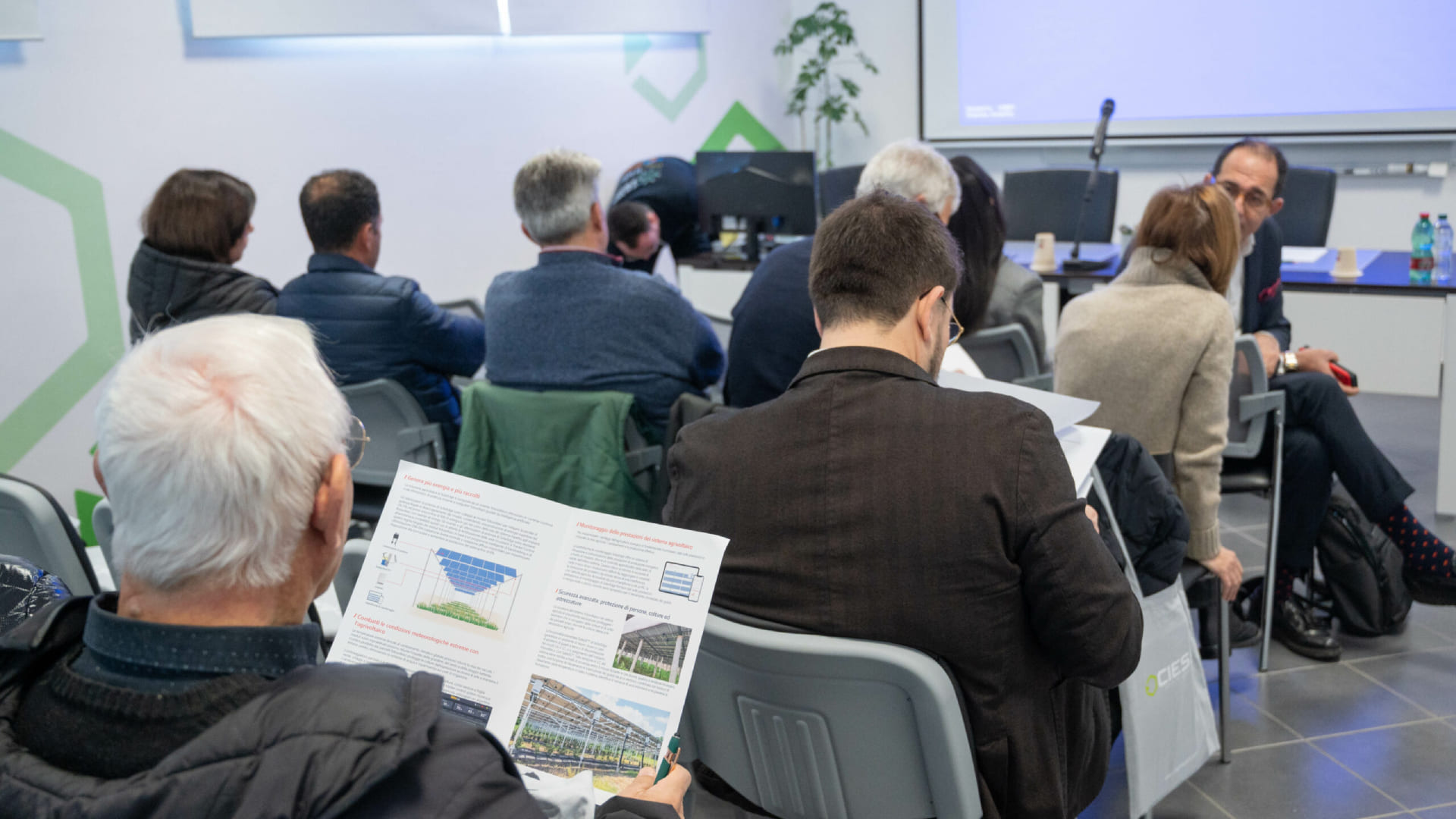Agrivoltaics and the next steps to be implemented are among the most discussed topics at the moment. Countless farmers are currently trying to understand how to proceed following the announcement made by the Minister for the Environment and Energy Security, Gilberto Pichetto Fratin, regarding the signing of the decree supporting the spread of advanced agrivoltaic systems.
On one hand, protests have begun from farmers regarding measures involving the conversion to organic farming and the potential reduction of pesticides. On the other hand, more and more agricultural entrepreneurs are interested in understanding how to stay competitive in the market, ensure the respect for production standards, and support environmental sustainability.

The topic of agrivoltaics has recently been explored by Ciesse through two meetings titled “Coltiviamo l’Energia,” aimed at agricultural businesses with at least 50 hectares of land. These highly attended meetings took place at the Augusta headquarters with the collaboration of SolarEdge, Enerklima, Open Consulting, and several consultants from the Intesa Sanpaolo Group. The sessions clarified some technical, procedural, and administrative aspects of the measure, which will soon come into effect.
After the approval from the Court of Auditors, expected in the coming days, the implementation phase will begin. Once the green light is given, the Energy Services Manager (GSE) will spring into action. Within 15 days of publication, the MEF-controlled entity, responsible for incentives, will publish the operational rules. These will include the schedule for competitive procedures, the requirements for photovoltaic (PV) systems, and the monitoring methods.
Agrivoltaics: the next steps – target 1.04 GW by 2026
The ambitious goal is to install at least 1.04 GW of advanced agrivoltaic systems by June 30, 2026. This will be achieved through a capital contribution of up to 40% of eligible costs and an incentivizing tariff on the electricity production fed into the grid.
The tariffs, paid for 20 years, range from €93/MWh for plants under 300 kW to €85/MWh (the maximum value for the auction) for projects above 300 kW. Additional bonuses are foreseen for regions in the Center and North. Incentive payments are suspended during hours with market prices at zero.

Requirements for Agrivoltaic Systems
The systems must be “innovative integrated solutions” that do not compromise the continuity of agricultural activities. The agricultural area must account for at least 70% of the total area of the agrivoltaic system. Minimum heights for the modules are set based on the type of activity (livestock or crop farming).
Access to Incentives: Registers and Auctions
Access to incentives will occur through registers and auctions. The procedures will be organized by GSE over the two-year period, prioritizing those who self-consume a higher percentage of electricity. Access to incentives is not allowed for plants that have started work before submitting the participation application.
The plants must be operational within 18 months of the communication of the procedure outcome, but no later than June 30, 2026. In the case of applications exceeding the available quota, priority will be given to self-consumption and the application submission date.
In conclusion, the decree represents a concrete step towards the promotion of advanced agrivoltaic systems, contributing to the transition to a more sustainable and innovative energy sector.
Entrepreneurs participating in the call will have the opportunity to be supported by the Ciesse team in all stages of the process.